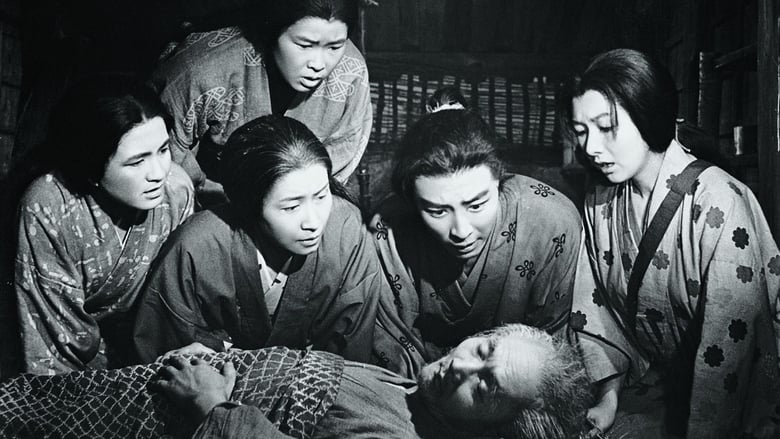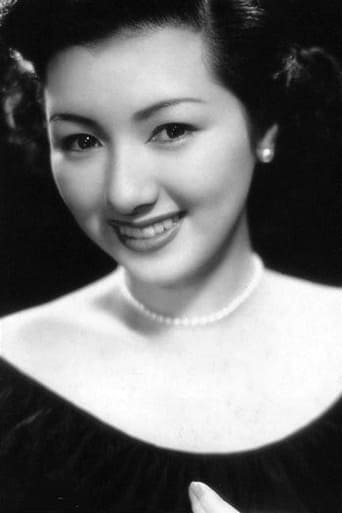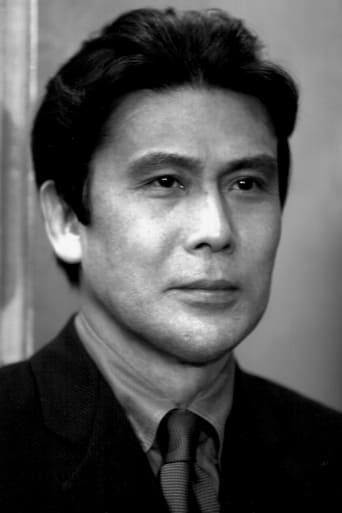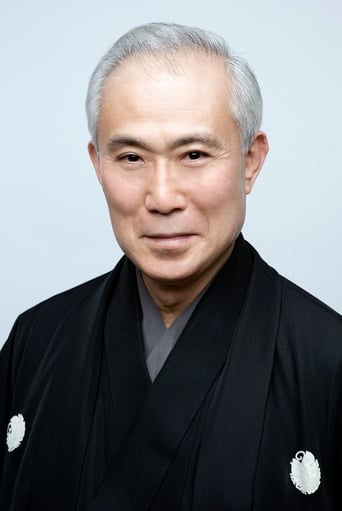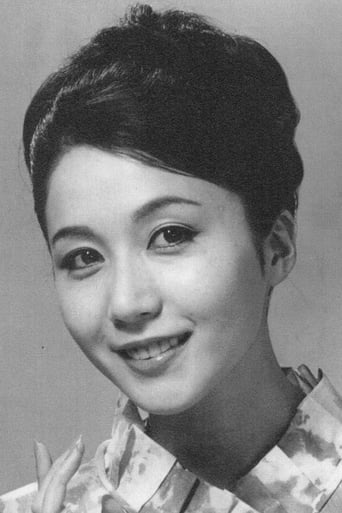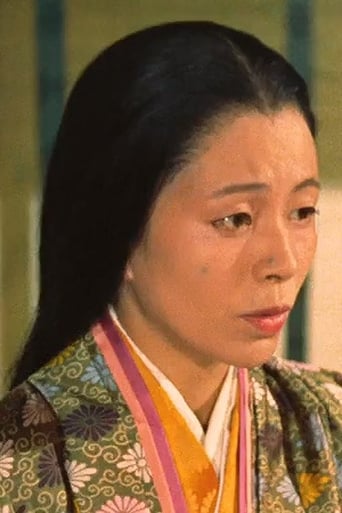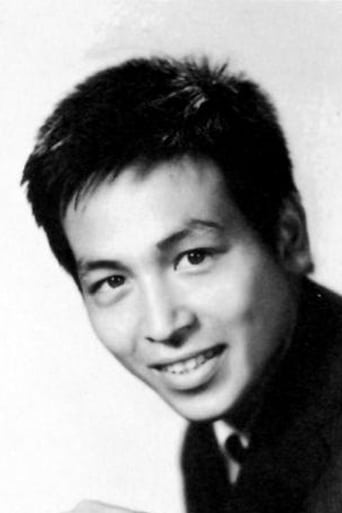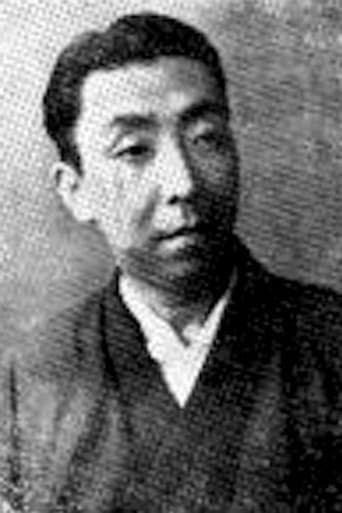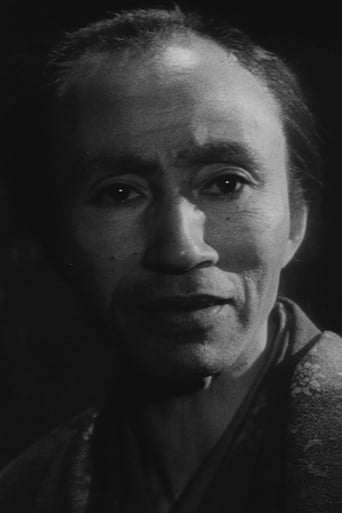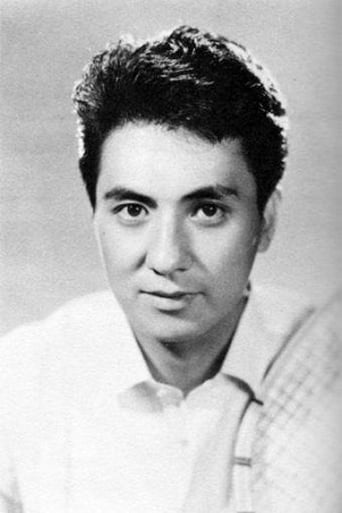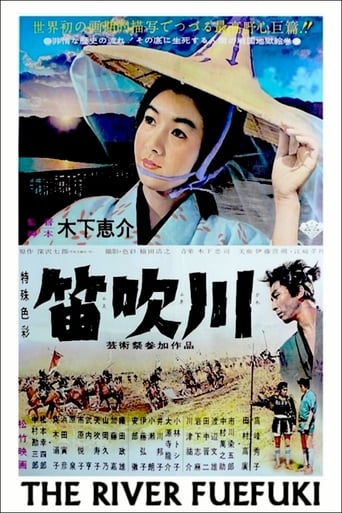
The River Fuefuki
October. 19,1960In a time of continuous civil wars ravaging the fields of feudal Japan, the eldest son of a very poor peasant family, living alongside the bridge over the Fuefuki river, decides to serve a warlord to escape his miserable condition, being soon followed by his younger brothers. Although not all the men of the family take this tragic path of death, women of the family will be doomed to endure the pain of loss during the next five generations.
Similar titles






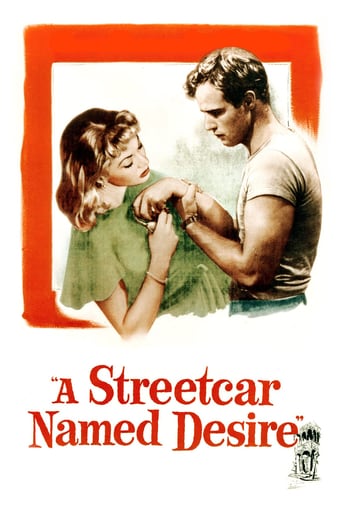
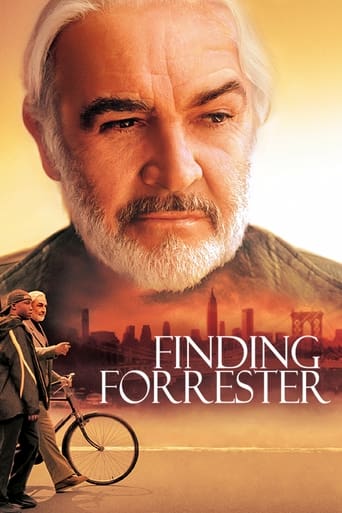

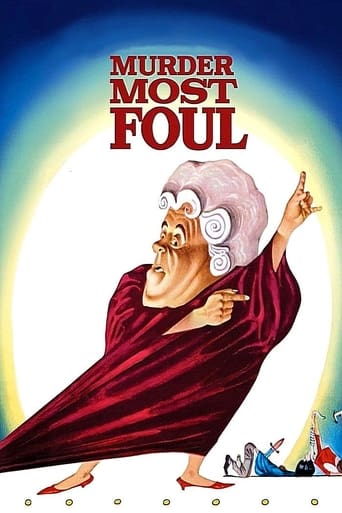
Reviews
Excellent but underrated film
This is one of the best movies I’ve seen in a very long time. You have to go and see this on the big screen.
The movie's neither hopeful in contrived ways, nor hopeless in different contrived ways. Somehow it manages to be wonderful
I enjoyed watching this film and would recommend other to give it a try , (as I am) but this movie, although enjoyable to watch due to the better than average acting fails to add anything new to its storyline that is all too familiar to these types of movies.
I have seen many Japanese films over the years and this film is one of the most breathtaking. During the film's 2 hours you are taken through generations of one family, with the film echoing the message that war leads to inevitable tragedy. The film is equally about Buddhism in the 1500s with re-incarnation, ghosts, rituals and temples being prominent to the story. In the background of the story is a grand wooden bridge that is a reminder of the dangerous world that lies across the water.I'm a fan of the coloured on black and white visuals. It's odd but adds a strange feel to the film that matches the ancient Japan world. The battle scenes are brief but stunning. I don't think any were reused as 'WILLIAM FLANIGAN, PhD' stated in his review. That's got to be one of the worst reviews I have read. He gives points based on subtitles and restoration (which is dependent on the screening, so is useless to the reader), and not on acting, story and plot. He seems to care very little about the style and the substance of a film rather the technical aspects. Anyone who makes dodgy reviews while always signing his name in capitals with 'PhD' next to it, is a bit sad.
THE RIVER FUEFUKI (FUEFUKIGAWA). Viewed on Streaming. Restoration = eight (8) stars; cinematography = six (6) stars; subtitles = six (6) stars; choreography = five (5) stars; frame painting / color filtering = two (2) stars; "music" = one (1) star. Director Keisuke Kinoshita's feudal-period drama wherein farmers are given the choice of a slow death as the numbing life of a peasant or a quick one in battle. Four generations (more or less) are shown to prefer the latter (both males and females). That's the movie. Kinoshita employs a boatload of technical tricks to disguise this threadbare, simplistic pacifist plot. Most are not particularly successful. Cinematography ( 2.35:1, black and white) is marred with frames of what look like hand-painted color swatches and objects (in static scenes) that resemble a five-year-old's coloring book. (Very distracting.) Some scenes are shot with color filters (seemingly at random) and an occasional set of freeze frames are tossed into the pot. Script typically has characters providing expository text (by commenting on what they are seeing and the viewer is not) rather than exchanging lines of dialog. Actors are rarely given a chance to reach out to and engage the audience, since the Director persists in using long shots to fill the wide-screen format. Acting (when you can see it in medium shots and close-ups) is not particularly well done. Talented actress Hideko Takamine is pretty much wasted even though she ages about 40 years during the film (her character has a limp which is about the only way the viewer can identify her in all those long shots!). A solitary Noh singer (usually filmed with a blue filter) is used as a Greek Chorus which adds not much to the proceedings. "Music" mainly consists of a temple gong and small hand-held temple bell (no temples are shown in the film). Sound of the latter seems ever present to the point that some viewers may be driven to turn off the audio! The same battle scenes are reused, but given different battle names. Battle deaths are poorly choreographed and far from convincing. Sloppy editing shows ropes employed to keep tourist at bay in one interior set (used for a feudal lord's residence). Subtitle flash rates are occasionally excessive. An insomnia countermeasure! WILLIAM FLANIGAN, PhD.
I would really love to see again this film, which I've seen in São Paulo in 1961. Besides the positive aspects mentioned by the reviews already posted, I would emphasize another quality: some events are presented two or three times from the point of view of the different characters. As the events are not organized in chronological order, and the situations, faces and happenings are similar, the film seems absolutely confusing, till you realize what is intended to be shown: the reality is repetitive, but unique for each person, and each event must be understood from different angles. It's a pity that this film is not available on DVD.
There's a rare sense of epic artistry in this unusual and striking medieval saga, directed by Keisuke Kinoshita as more of an aesthetic experience than a conventional drama. The film was designed to resemble a decorative 16th century Japanese scroll, painting spare brushstrokes of vivid color across each panoramic, wide-screen black and white image. It can be difficult (and not really worth the effort) to follow the endless progression of characters, and the manner in which the film unfolds is often more involving than the story it presents. Each leap forward in time approximates the turning of another page, usually to the next in a series of pointless, bloody battles between feudal warlords, with each conflict properly labeled beforehand, identifying the date, location, and principals involved. The battle scenes serve as punctuation, following successive generations of peasant soldiers to their doom, with the repetition suggesting that war is the only eternal aspect of the human condition, and passive resistance is futile.
Top Streaming Movies











